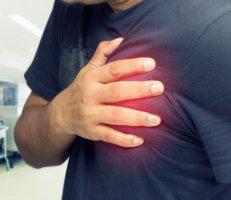Chest pain is one of the leading reasons for emergency room visits in the United States, with more than eight million ER visits yearly. It is always advisable to seek medical attention if you experience chest pain, as it can indicate a severe problem. Chest pain may feel like a sharp stab, a dull ache, or a crushing or burning sensation. The sensation differs from person to person depending on what is triggering the symptoms. There are various potential causes of chest pain Covington, but the most serious cases involve the heart or lungs.
Some of the causes of chest pain are severe conditions like a heart problem, but most of the time, causes of chest pain may be mild problems like a muscle strain. The following are examples of heart problems that cause chest pain.
Heart attack
A heart attack, also known as myocardial infarction, occurs when a part of your heart muscle doesn’t get enough blood, often due to a blood clot. More damage to the heart muscle occurs without treatment to restore blood flow. The classic symptom of a heart attack is pain or discomfort in the center or left side of the chest that lasts for a few minutes or goes and comes back. You may also have shortness of breath; this usually comes with chest discomfort, but it can happen before. Other symptoms include feeling weak, lightheaded, and pain or discomfort in the jaw, neck, arms, shoulders, or back.
Angina
Angina is chest pain that stems from reduced or poor blood flow to the heart due to atherosclerosis. You develop this condition when fatty deposits build up in the arteries supplying blood to your heart. Stable angina is the most common type of this condition; its triggers include stress and exercise. Stable angina usually stops within a few minutes of resting. Angina usually is not life-threatening, but it is a warning sign that you may be at risk of stroke or a heart attack. You can lower your risk of developing more severe health problems by having a balanced diet, losing weight if you are obese, reducing alcohol intake, stopping smoking, and exercising regularly.
Aortic dissection
Aortic dissection is a life-threatening condition whereby a tear occurs in the aorta, allowing blood to rush through the incision and causing the layers of the aorta to split. This condition can be fatal if blood goes through the outside aortic wall. Aortic dissection is a rare condition, but it usually affects men in their 60s and 70s. The symptoms of aortic dissection typically mimic those of other diseases, leading to delayed diagnosis.
But early detection and prompt treatment of aortic dissection significantly improve the chances of survival. Typical symptoms of aortic dissection include severe pain in your chest or upper back. Patients describe it as a tearing or ripping sensation that radiates to the neck and down the back. Other symptoms include severe stomach pain, loss of consciousness, shortness of breath, difficulty walking, and leg pain.
Book an appointment with your doctor at Louisiana Heart and Vascular if you have new or unexplained chest pain for diagnosis to establish the cause of your pain.
